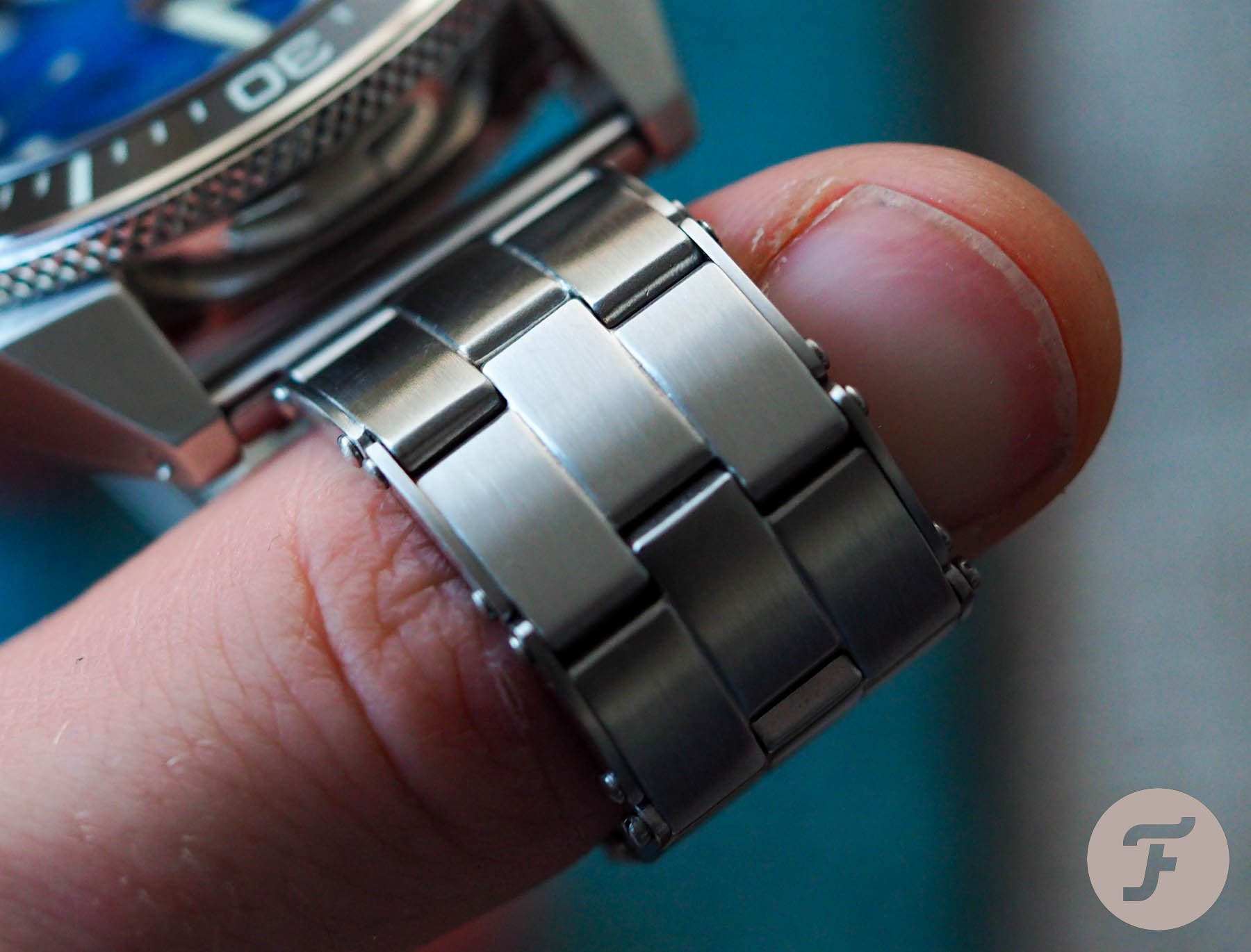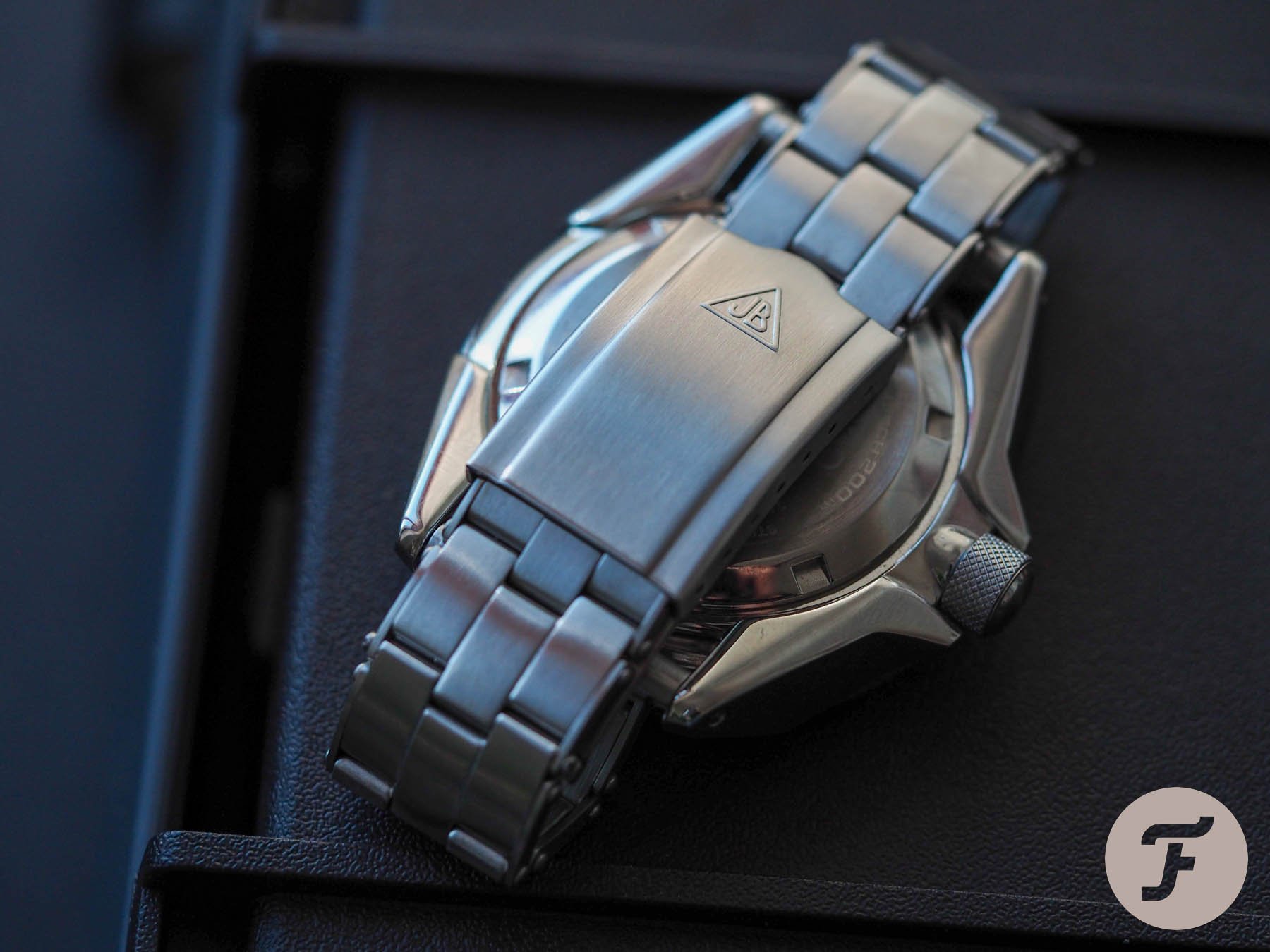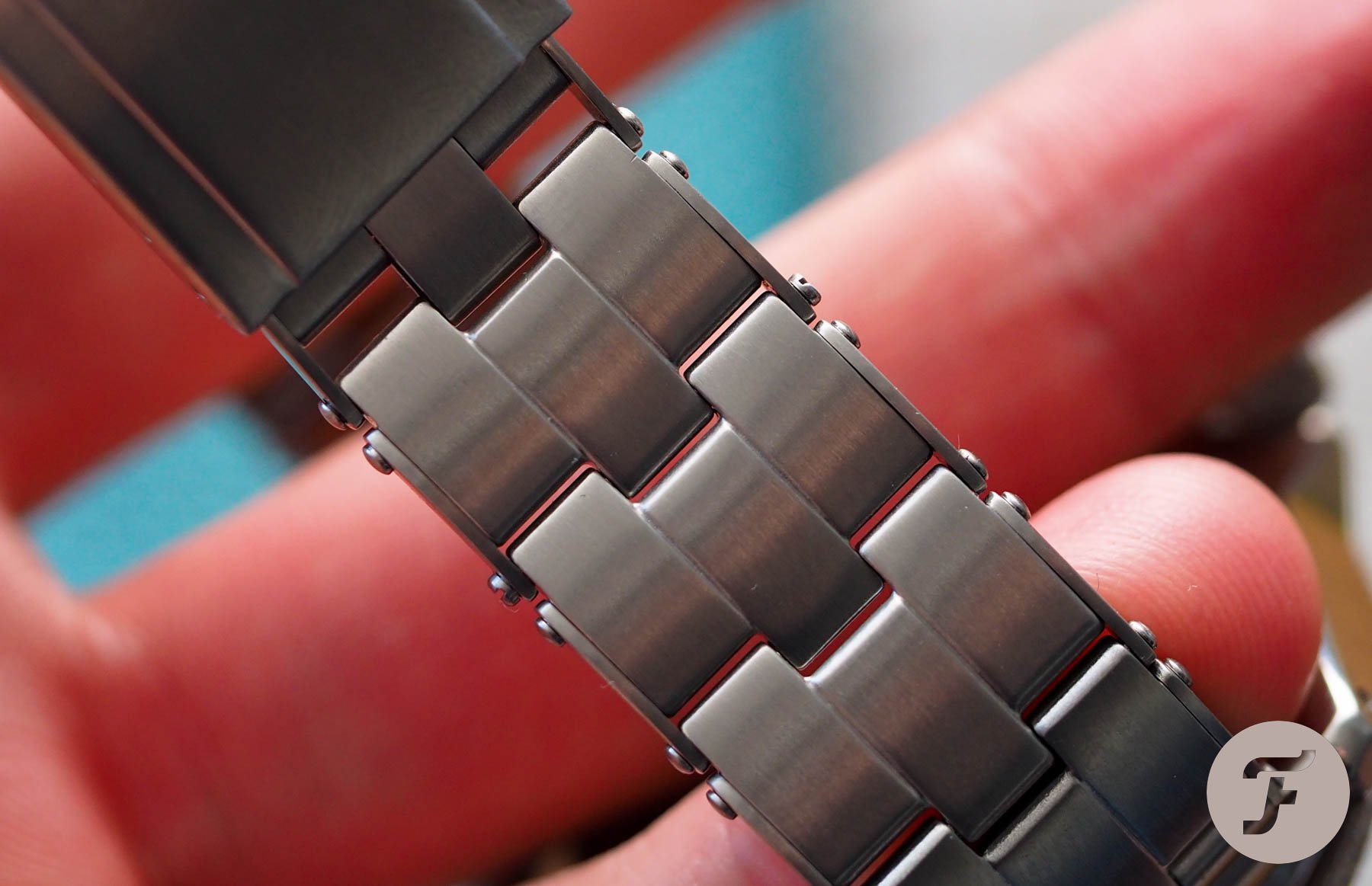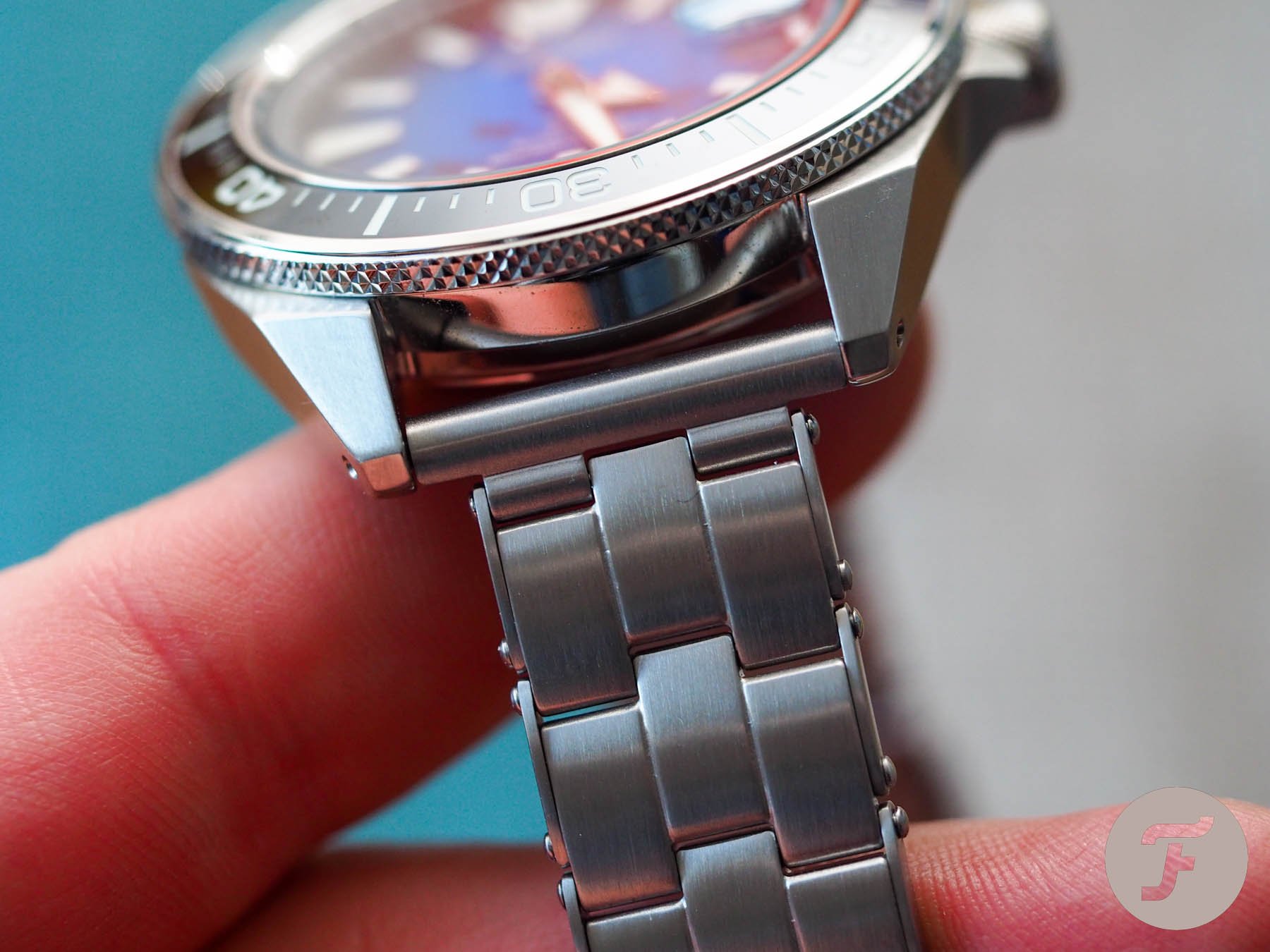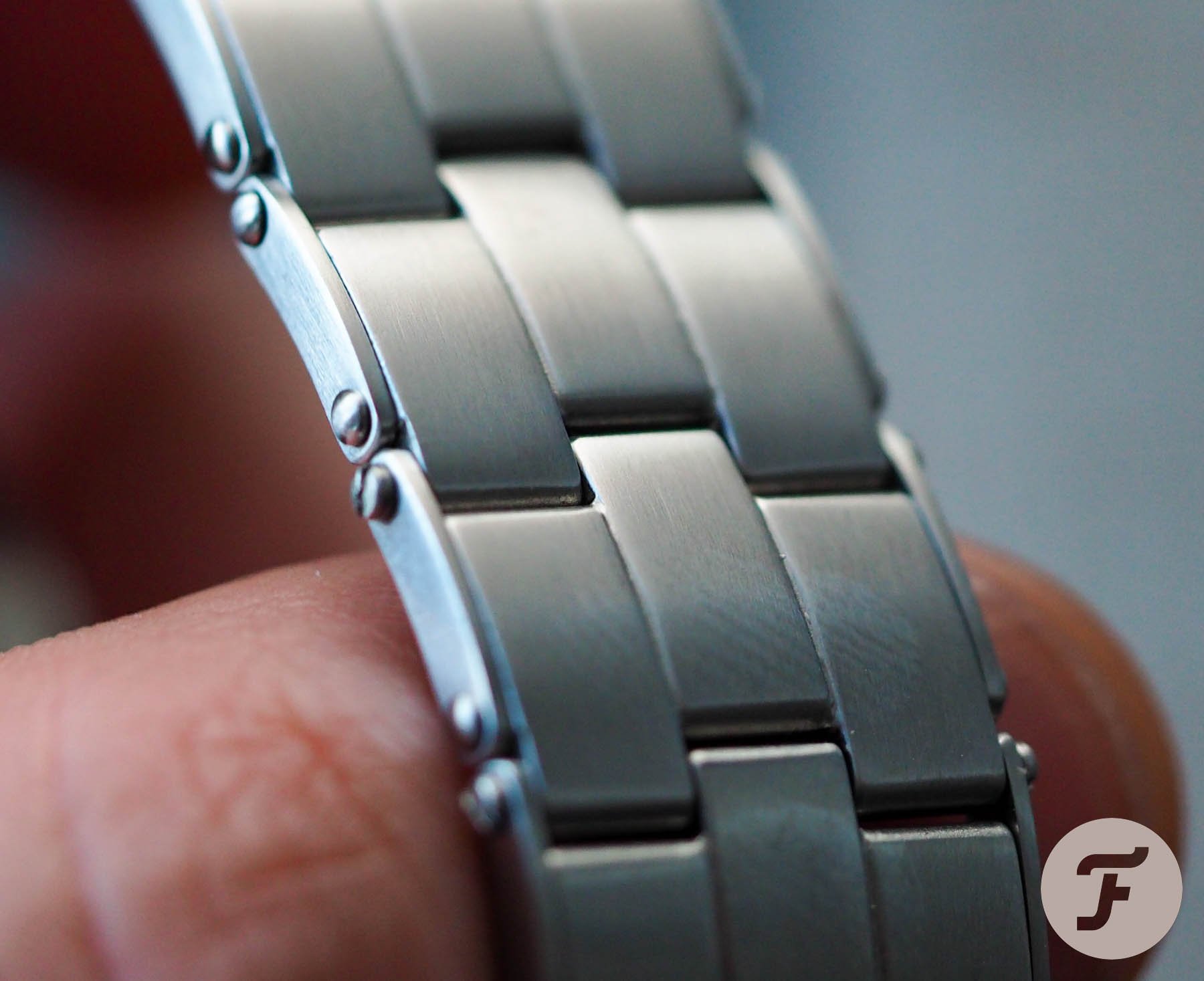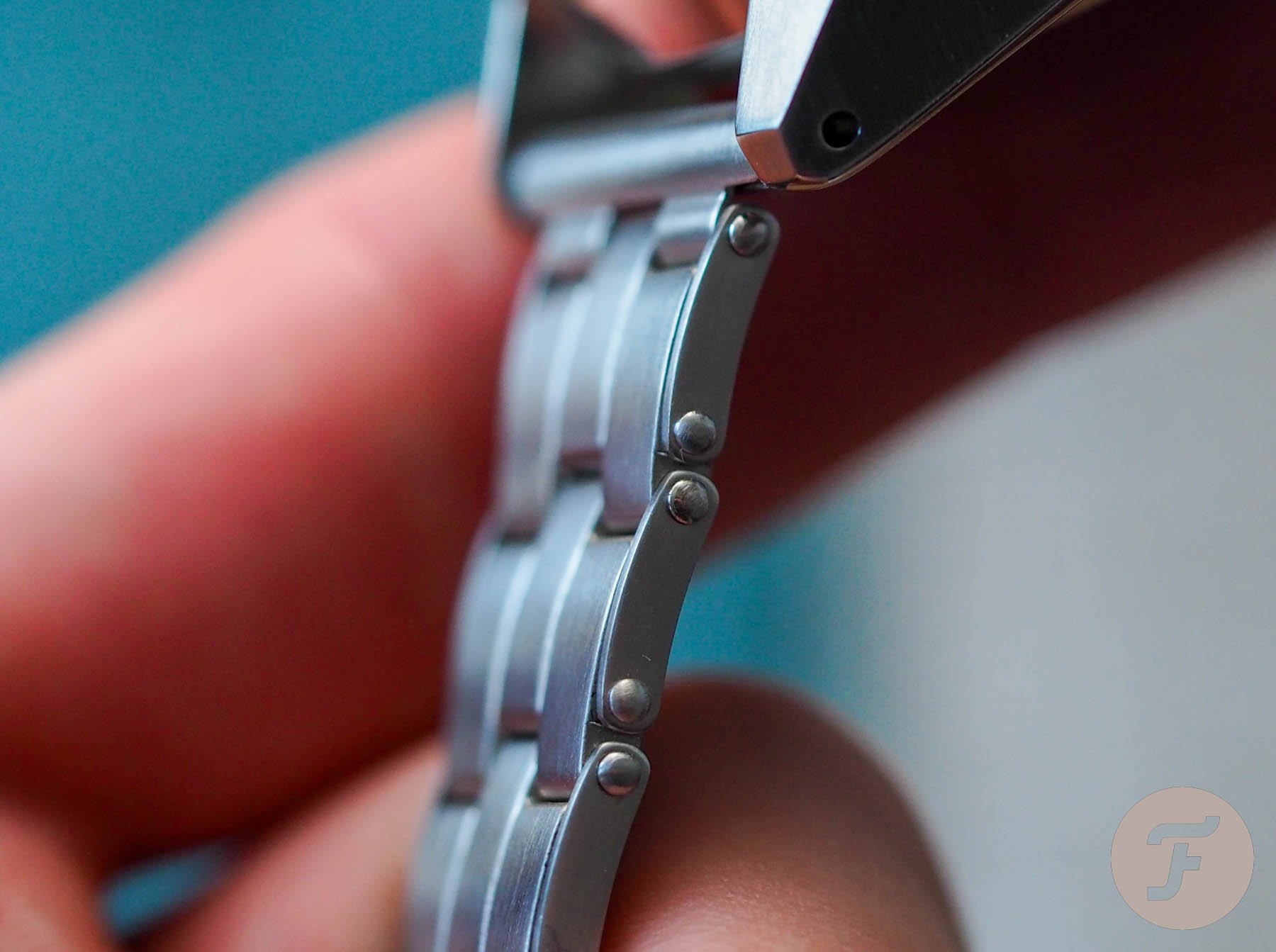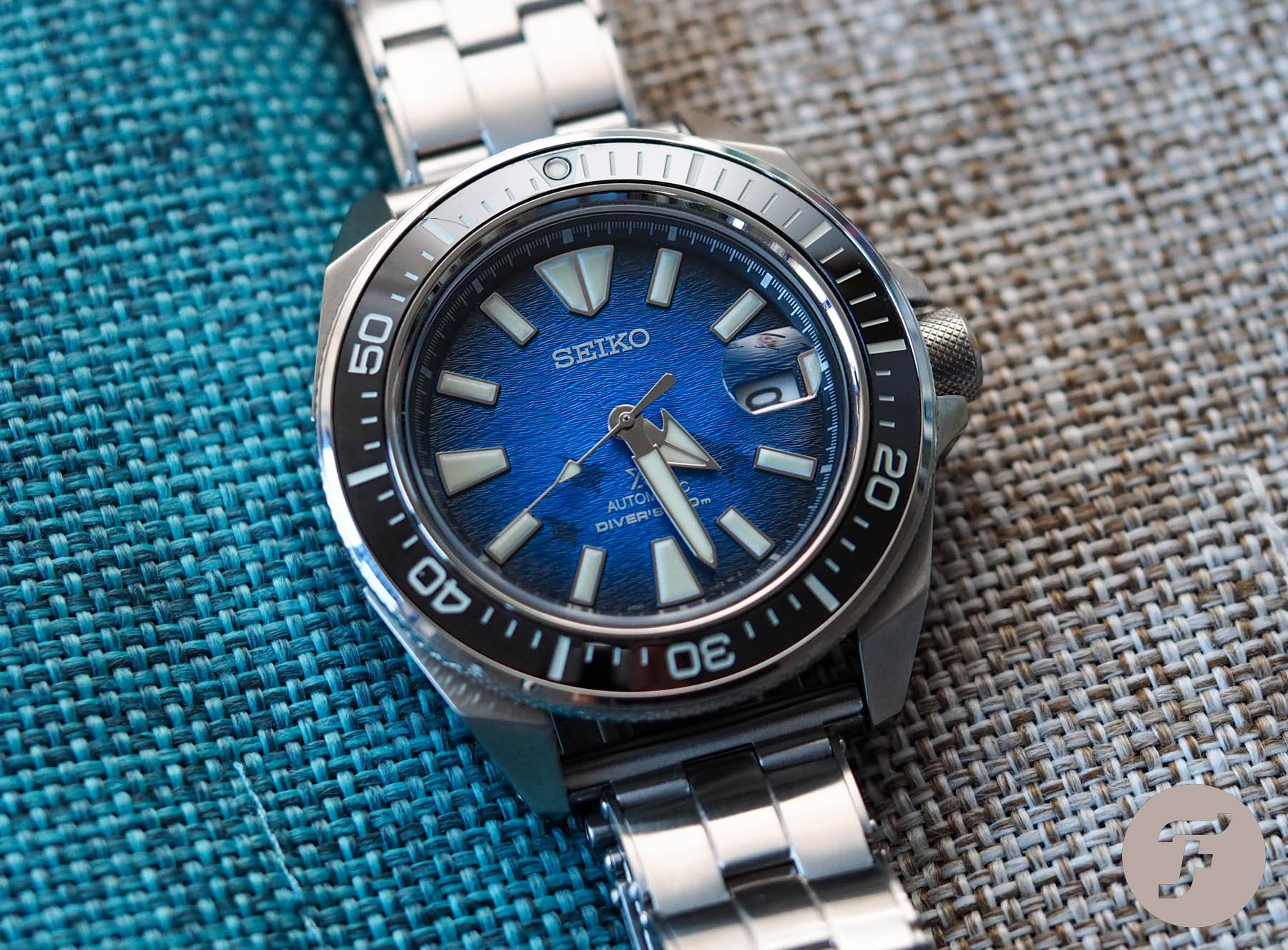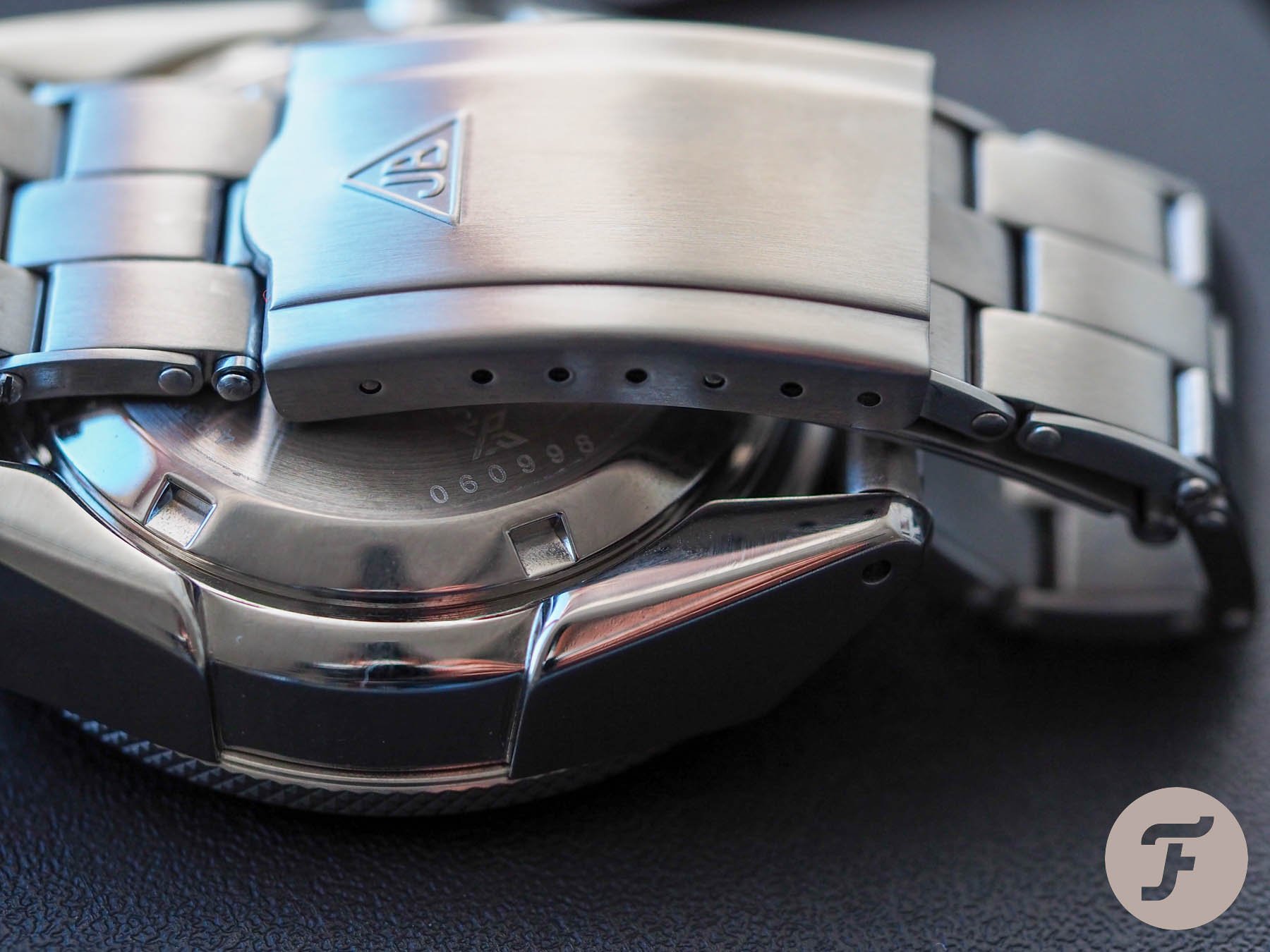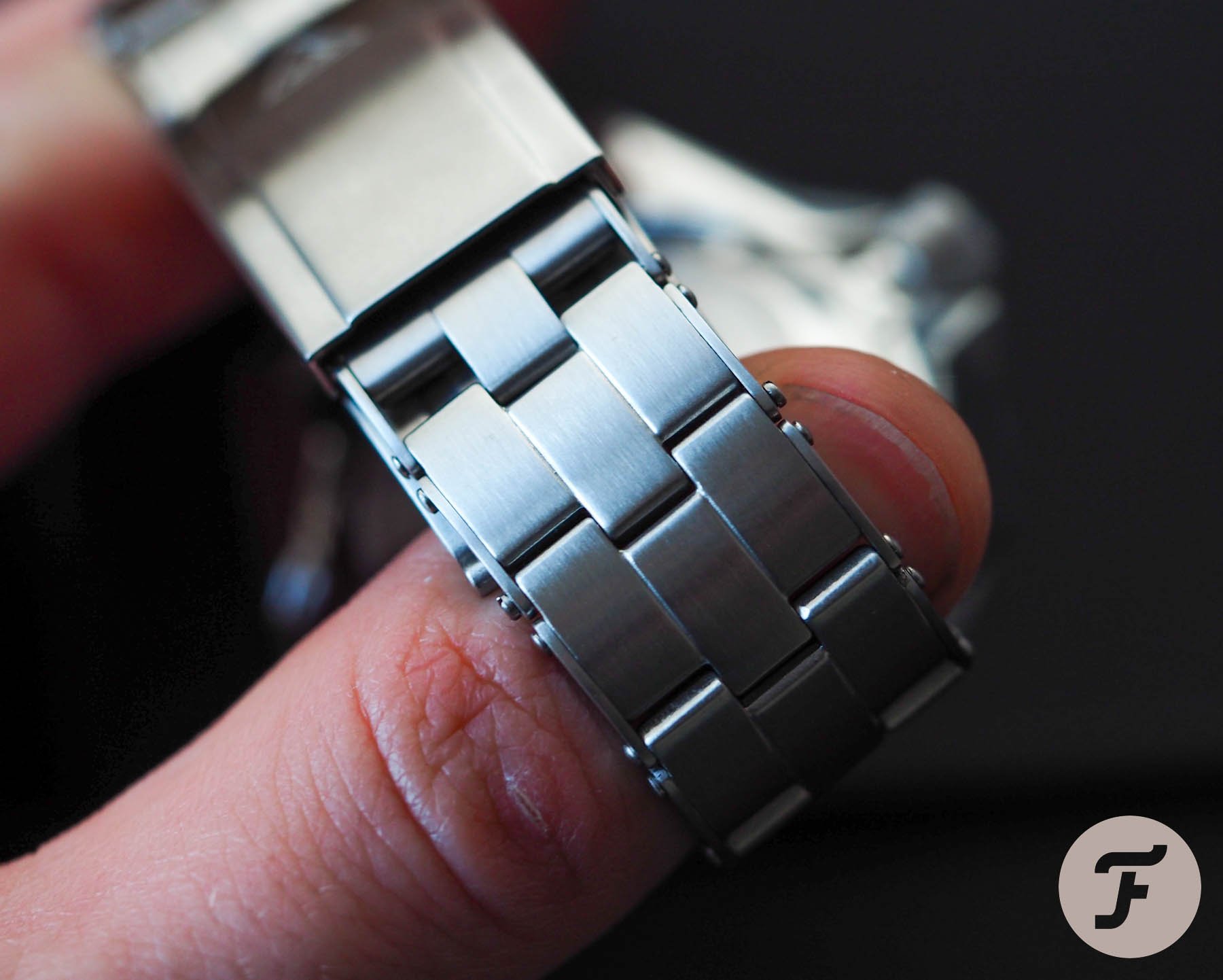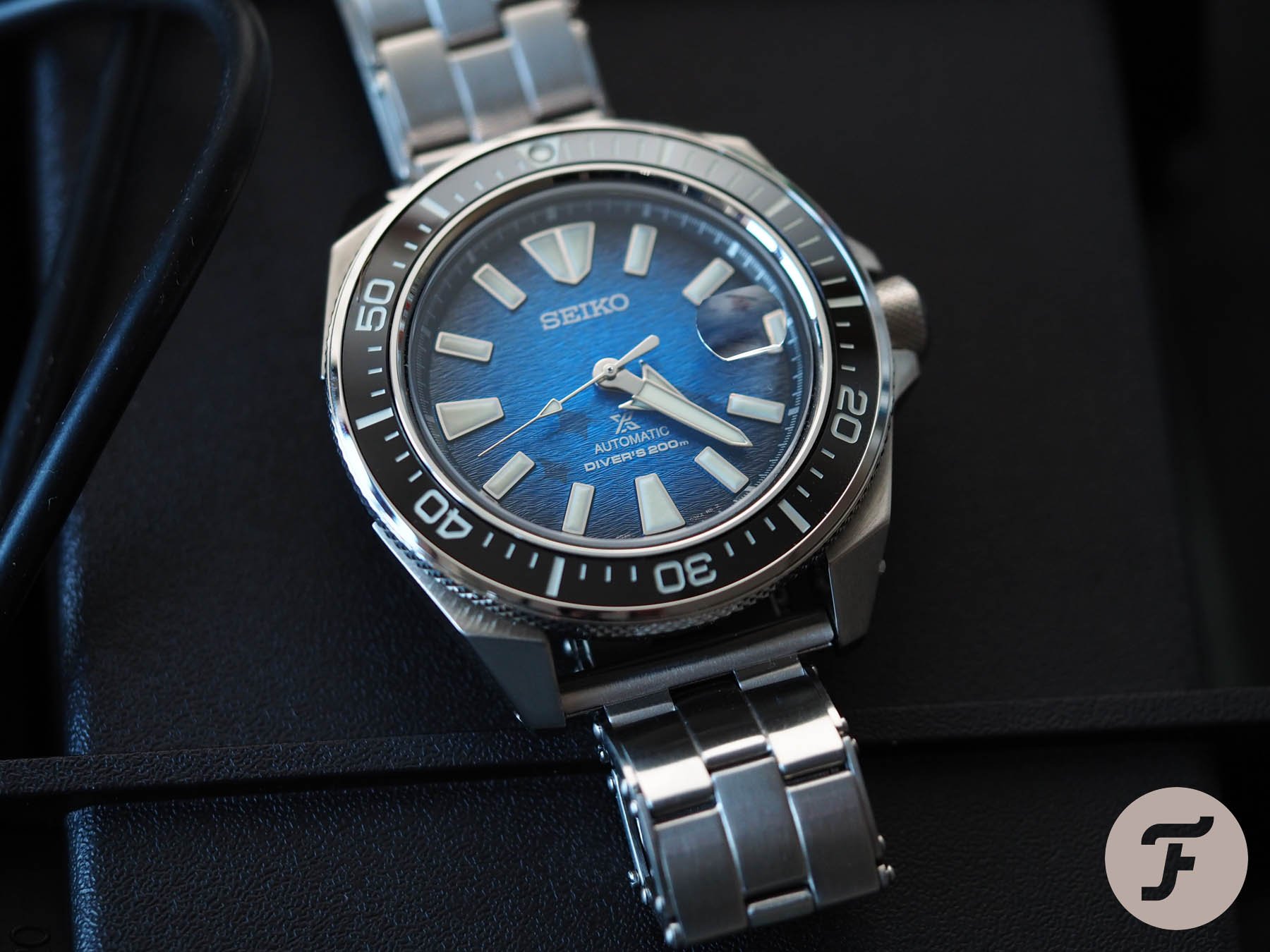Forstner Rivet Bracelet Brings Comfort, Quality-Machining, And Vintage Vibes To Your Wrist
The only question I had when I received a couple of Forstner rivet bracelets in the mail, was which watches I wouldn’t be trying them on… A rush of excitement greeted me when I unwrapped this latest design from my favorite after-market bracelet manufacturer and I spent the next two days taking it to pieces and reassembling it, before flipping it between six different watches. It finally found an unlikely home on my oversized Seiko Samurai, otherwise known as the SRPE33 Save the Ocean model.
Don’t misunderstand me here: it didn’t take me six attempts to find a watch that suited the Forstner rivet — far from it. In fact, all six I tried would have been glad of it. But it was the Seiko Save the Ocean SRPE33, which had been searching for a slightly more elegant alternative to the bracelet it came on ever since it joined my stable, that won the day. Why? Something about the odd mismatch of size hammered home the vintage aesthetic that the Gay Frères-inspired bracelet exudes.
Fit options
I’ve never owned a rivet bracelet before. I’ve studied them from afar with suspicious interest. As a relatively hairy chap, I have to be careful when it comes to bracelets. I don’t want anything snagging on my “gorilla wrists” as one charming fellow writer once termed them. As such, I was a bit nervous about the close-linked style of the rivet bracelet.
As it turns out, I needn’t have worried. Forstner makes two styles of rivet bracelet. There is a standard, solid link version, and there is a “stretch” version with stretchy links, much like the final three links of the Forstner Flat Link that we’ve discussed at length on Fratello (pun intended). Unsurprisingly, I have them both in for review. Today, I am focusing on the solid link version, but I really enjoy stretchy bracelets so expect to see a follow-up at some point, covering the other style. The best thing about the solid link bracelet is that the last link is also stretchy (see below). In my opinion, that gives those skeptical of the full-stretch the best of both worlds.
I took the solid link version in a 22mm lug width. For a bit of variety, I took the expandable version in 20mm. Both straps are wider at the lug than they are at the links. These straps do not taper and are a solid 18mm from the lugs to the buckle, which takes the form of Forstner’s typical fold-over. It is embossed with the simple “JB” triangle logo and provides a firm, friction-fit closure.
A classic reborn
Forstner has made a habit of producing modern bracelets that are really faithful to vintage styles. The advantage here is, of course, modern machining is a touch more refined, and so Forstner’s high-fidelity products get the best of both worlds. I was speaking to the brand founder a few weeks before the Forstner Rivet bracelets hit the market and expressing my desire to see this exact style, and a traditional ladder bracelet given the Forstner treatment. At the time, he just smiled and said, “wait and see.”
Now I can see what I was waiting for, I am thrilled with it. As Forstner continues to work its way through the watch bracelet Hall of Fame, firmly establishing itself as the modern Gay Frères in the process, the rest of us can just sit back and bask in the warm glow of a really satisfying era of watch collecting.
Don’t be scared
While Rivet bracelets appear a bit fiddly to set up, they really aren’t as daunting as I’d imagined, and the end result is just great. I covered in detail in my last article on Forstner (discussing the Forstner Beads of Rice bracelet) how to unscrew the male/female style screws used in these bracelets. I would suggest going back to that article and reading the techniques described, but I will recap them here quickly and also point out one significant difference of which you should be aware when it comes to changing links on the Forstner fixed Rivet bracelet.
Simply put, you always want to be actively unscrewing the “male” end of the screw bar. The male end (for those of you struggling to visualize this) is so named because it goes “in” to the female end. The male end looks like a tiny screw, whereas the female component receives it. In this case, the female end is what constitutes the “bar”. The male end simply holds the bar in place.
Trying to unscrew from the female side requires a dangerous amount of torque, which can result in your screwdriver skidding out of the slow and scratching the bracelet. That is something we want to avoid. On Forstner bracelets, the male end is always on the right-hand side of the bracelet as you hold it with the watch head away from you.
A lesson in orientation
To clarify: lay the watch on the table before you so you can read it (the right way up). Pick up the bracelet that extends from the 6 o’clock side. The male screws run down the right-hand side. That means you need to insert one screwdriver in the female slot and hold it steady while actively unscrewing the male end with your right hand.
Once you’ve adjusted that side of the bracelet, lay it back on the table as you had it before and rotate it 180 degrees so it is “upside-down”. Take the bracelet that extends from the 12 o’clock side and pick it up. Again, the male screws are on the right-hand side of the bracelet from this orientation, so go ahead and support the female slot on the left and unscrew carefully from the right.
Carefully is the word
Here is the main difference between the Rivet bracelet and the Beads of Rice: the Rivet bracelet uses domed screw heads, which sit on the outside of the links. They are not recessed into the links as they were on the Beads of Rice bracelet. This is an essential part of the Rivet style, which gives these bracelets their strong, over-engineered vibe. This means you must take care. My suggestion? Support the blade of your right-hand screwdriver with your index finger. This takes a bit of practice, but it is worth it.
Another option is to tape the bracelet before you begin work. Not everyone is a fan of this method, but it is growing in popularity. As more and more brands encourage owners to change their own straps, so too is this becoming more widely recommended. There is nothing wrong with it at all. It is a bit time-consuming, but we’re talking minutes. Considering a scratch is likely to cause you much more annoyance, it is probably worth it. I would recommend using thin, glossy electrical tape. Normally, this stuff is yellow/orange in color. It is what most major brands use to mask bracelets when applying finishes on the wheel.
Most importantly, take your time. Experimenting with bracelets is a lot of fun. Thankfully, companies like Forstner make it very accessible. There are quite a few options on the online store now, and they are reasonably priced. The Forstner Rivet bracelet retails for just $125. Check out the official site for more information.

